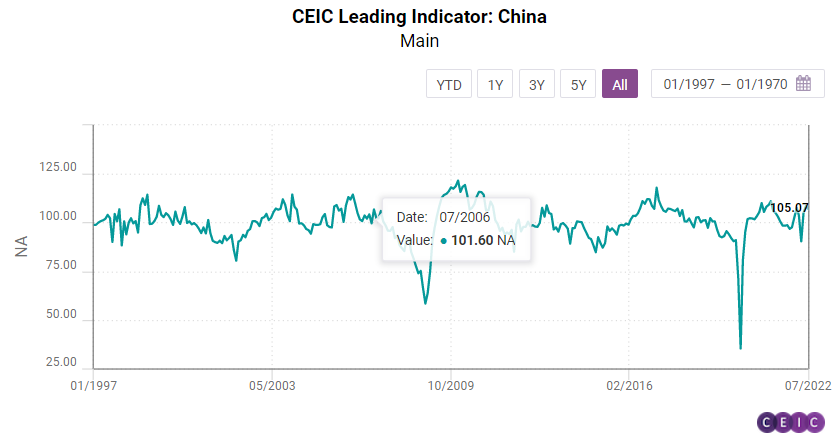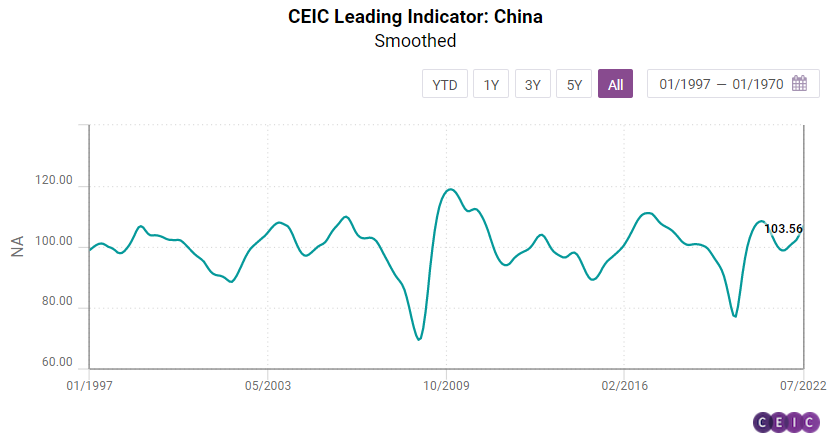-png.png)
The CEIC Leading Indicator is a proprietary dataset designed by CEIC Insights to precede the development of major macroeconomic indicators and predict the turning points of the economic cycle for key markets. It is a composite leading indicator that is calculated by aggregating and weighting selected leading indicators covering various important sectors of the economy, such as financial markets, the monetary sector, labour market, trade, and industry. It is developed through a proprietary CEIC methodology and employs data from the CEIC database. The CEIC Leading Indicator currently covers eight regions – Brazil, China, India, Indonesia, Russia, the Euro Area, Japan, and the United States.
The CEIC Leading Indicator for China, declined from 108.5 in June to 107.0 in July, still staying above the 100 threshold. The reading suggested that the Chinese economy is performing above its long-term trend. The automobile sector continued to recover, growing by 31.78% y/y in July, following the 28.62% y/y increase in June.

China’s official manufacturing PMI, however, fell once again into negative territory, after rebounding slightly in June. The index dropped to 49 from 50.2 in the previous month as four out of the five components fell below the threshold level of 50. In the first seven months, floor space sold of commodity buildings shrank by as much as 23.09% y/y. Money supply grew by 11.99% y/y in July.

The smoothed CEIC Leading Indicator improved from 105.2 in June to 106.8 in July, suggesting improved growth prospects for the Chinese economy in the second half of the year.
Keep informed each month on the predicted turning points of the economic cycle for key markets with our free, proprietary CEIC Leading Indicator. Learn more and register here
.png?width=160&name=ceic-logo-Vector%20logo%20no%20tagline%20(002).png)
